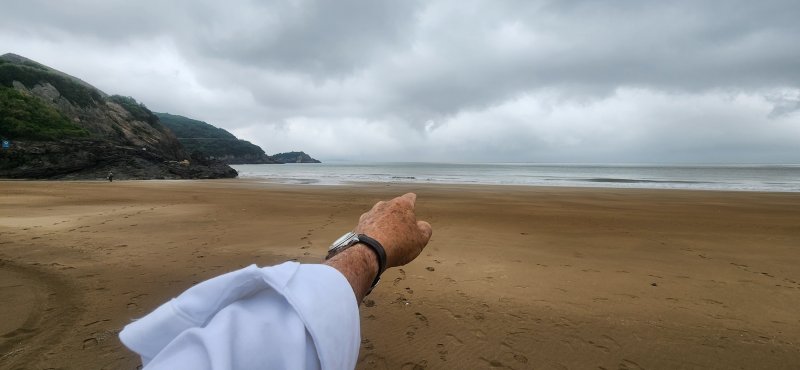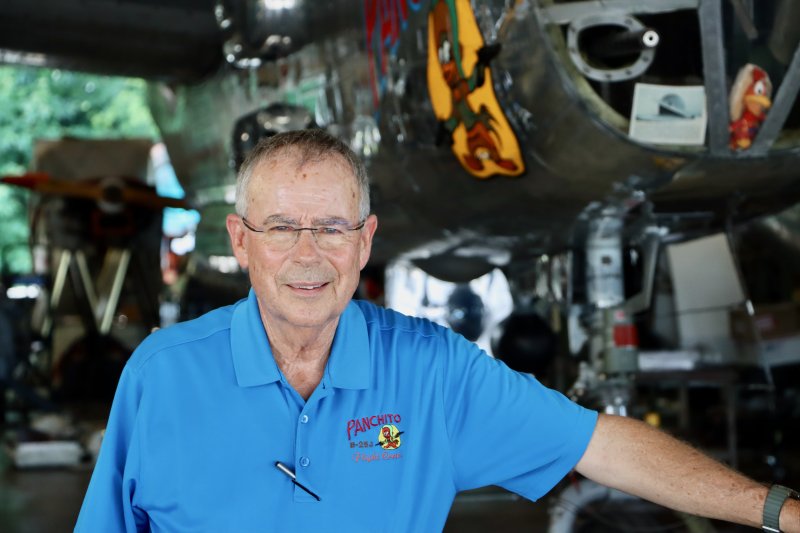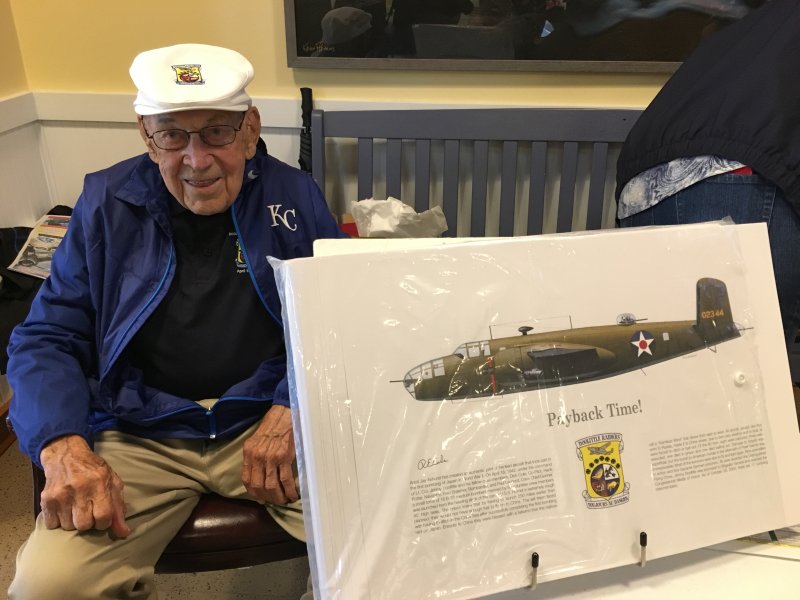Local pilot retraces Doolittle Raiders’ fate in China
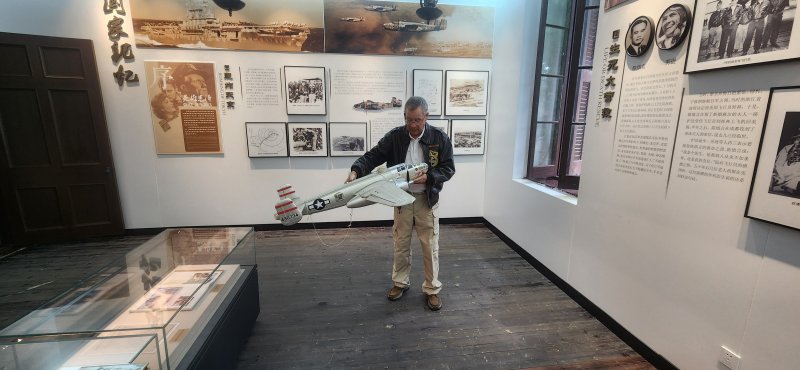
Larry Kelley had just wrapped up shooting a segment for a Chinese television documentary on the Doolittle Raiders, the American aviators who were first to bomb Tokyo in World War II, after launching their B-25s from an aircraft carrier.
Kelley was walking in the footsteps of heroes at the Chinese hospital, where four of the Raiders were treated for injuries they received while ditching their bombers.
As he entered an unused room in the building, he was stunned by what he saw.
“I go to look in the storeroom next door and there’s a model of my airplane. It’s the only thing in the room, a big, radio-controlled model of my airplane sitting on the floor. Nobody knew it was there. I said to [the producer], ‘You’re not going to believe this,’” Kelley said.
Kelley has owned the real World War II-era B-25 bomber, named Panchito, for 28 years. He has based it at Delaware Coastal Airport in Georgetown for most of that time.
Panchito is a favorite on the air show circuit, appearing at events from Wings & Wheels in Georgetown to the world’s largest air show in Oshkosh, Wis.
Kelley, 77, went to China for 10 days in May to retrace the steps of the Doolittle Raiders for a documentary, called “Beyond the Medals: We Fought Shoulder to Shoulder.” The Doolittle episode is one in a six-part series that is being produced by Chinese television network CCTV to coincide with the Japanese surrender and the end of World War II.
The documentary is scheduled to debut in August.
The Doolittle Raiders were a group of 80 American airmen, all volunteers, who took off in 16 B-25s from the U.S.S. Hornet to bomb Tokyo, Japan, April 18, 1942. The mission was led by Lt. Col. James Doolittle.
It was the first American attack on the Japanese homeland, in the wake of Pearl Harbor. The mission caused minimal physical damage, but inflicted a psychological toll on the Japanese.
“Japan was embarrassed. They had told their people for 2,000 years that their island was a fortress that couldn’t be attacked. Now they had American bombers flying over the emperor’s palace,” Kelley said.
After the raid, the bombers were to fly to mainland China, which was occupied by Japanese forces, land, refuel and fly to Chungking. The B-25’s were to be turned over to Chinese Air Force. But, most ended up low of fuel and crash-landed near Quzhou and other cities south of Shanghai. One B-25 landed in the Soviet Union.
The U.S. and China were allies in World War II. In fact, Kelley said, Chinese soldiers fought alongside Americans on D-Day in France and in the Battle of the Bulge.
“Most people today have forgotten who our friends were,” he said. “More than 250,000 Chinese civilians died because they saved 80 Americans.”
Kelley has devoted much of his life to the history of the Doolittle Raiders. He has served on the board of directors for the Doolittle Raiders Association and is one of five honorary Raiders.
Kelley owns Lt. Col. Doolittle’s wristwatch and was friends with Dick Cole, Doolittle’s co-pilot, who visited Delaware Coastal Airport in the past. Cole died in 2019 at 103.
The Chinese production crew first interviewed children of the Raiders in Ohio, before coming to Delaware Coastal Airport in April to talk with Kelley and get a first-hand look at Panchito.
“They filmed for two days. There were no leading questions. I was not asked to say anything. I was not led in any way. I expected it, but not at all,” Kelley said.
The producers asked if he wanted to go to China to visit the Raiders’ crash sites, all expenses paid. Kelley quickly accepted.
He brought with him Doolittle Raiders coins that he would give to the Chinese citizens and their relatives who helped the Raiders as tokens of friendship.
“When you go to China, the custom is that you give gifts. The symbolism of the coin is that it ‘ties our Raider family to your family, a tie that will forever be,’” Kelley said.
Kelley’s mission in China was to travel the routes the Raiders took from crash landing to safety from Japanese forces, which had orders to track them down, and to meet the people and their relatives who rescued the Americans.
“From the time we started, the first day out, it was almost religious,” Kelley said. “It was as if the Raiders themselves were directing this film.”
Kelley recounted how he met 93-year-old Lio Mingfu, who was 10 when Raider Lt. Charles Ozuk parachuted into his village. Mingfu’s father and brother carried a seriously injured Ozuk down a mountain to safety. Ozuk gave Mingfu a 1937 copper penny that he still carries with him today.
In the city of Linhai, Kelley visited a former hospital and stood next to the operating table where Lt. Ted Lawson had his injured leg amputated by an American doctor who was flying on the mission. Lawson survived and later wrote the book “Thirty Seconds Over Tokyo.”
In another area, Kelley met the granddaughter of a Taoist priest who hid one of the bomber crews behind an altar. The priest refused to tell Japanese soldiers where the Americans were and was beaten, almost to death.
Kelley also descended into a cave, even though the producers thought it was too risky, where the members of Crew 15 hid from the Japanese.
“I said, ‘I’m not coming halfway around the world and not experience this.’ I wanted to feel those ghosts. No American had been in that cave since Crew 15 was there,” he said.
Most Raiders made it safely out of China, but eight were captured by the Japanese. Three were executed by firing squad after forced confessions. One crew member died of illness.
The remaining four men survived and were liberated from a Beijing prison by American paratroopers Aug. 20, 1945.
The Raiders are considered heroes in China. Most of the crash sites and locations where they received aid have been designated as cultural heritage centers.
“There’s no propaganda. They’re more historically accurate than some of the history books,” Kelley said.
Kelley, who has been researching the Raiders for decades, said he was able to solve some mysteries along the way.
“I learned how Leland Faktor [flight engineer and gunner on Crew 3] died. He never made it out of the airplane. People said his parachute malfunctioned, but he crashed with the airplane. We proved certain facts by talking to the people who got his body out of the wreckage,” Kelley said.
Kelley was also able to identify B-25 parts that are still being recovered at the crash sites.
He said he also learned a valuable lesson about U.S.-China relations.
“On the flight back from Beijing, I met a young Chinese software engineer. We got to talking. I told him what I was doing there, and he said, ‘What most young Chinese think, and this is what they’ve been told, is that China just needs to go to war with the U.S., just get it out of the way, then we can do what we want.’ How many young Americans think the same thing? We need to sit down and figure out a middle road. That’s what families do, and our countries were families,” Kelley said.
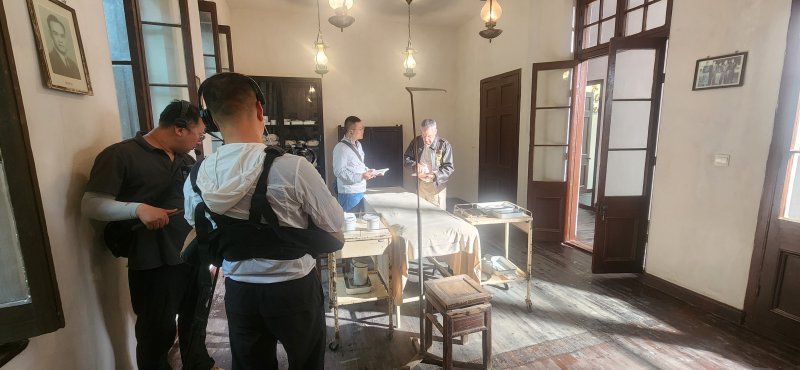
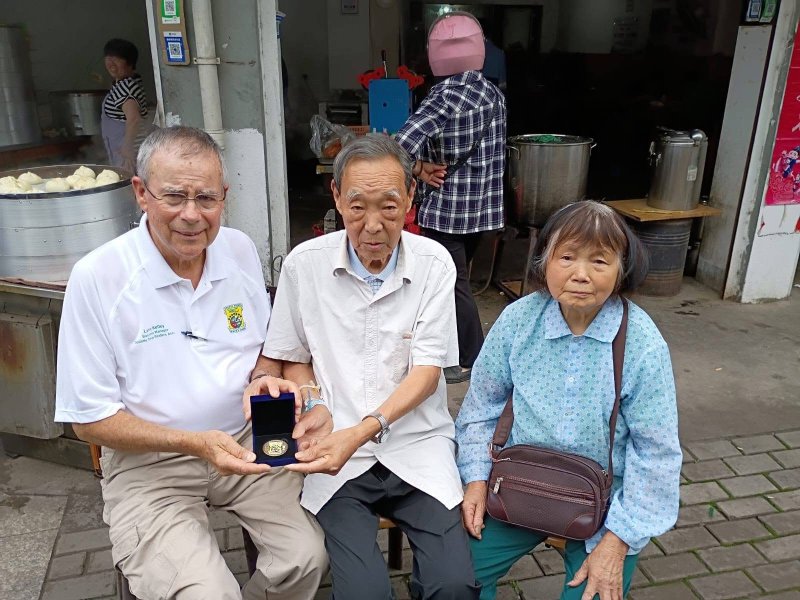
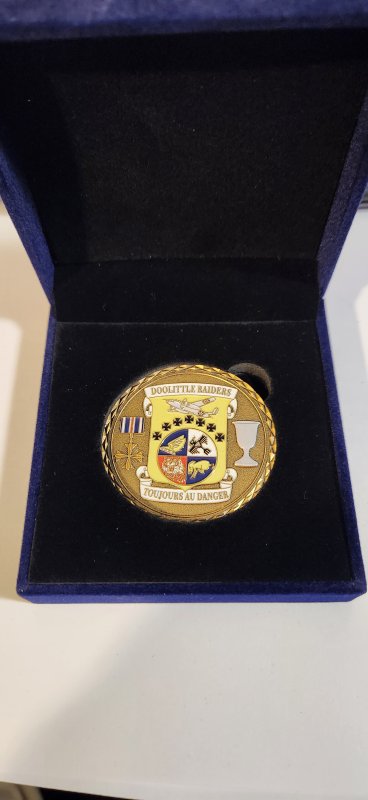
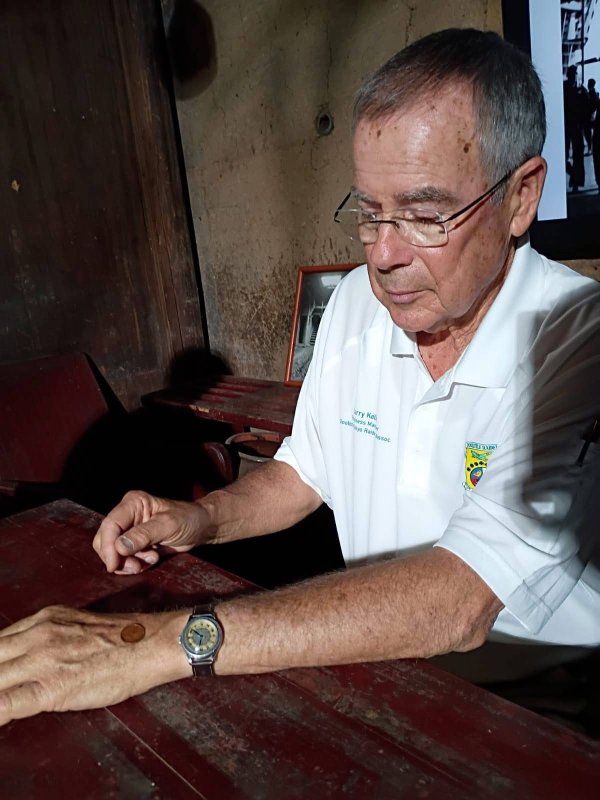
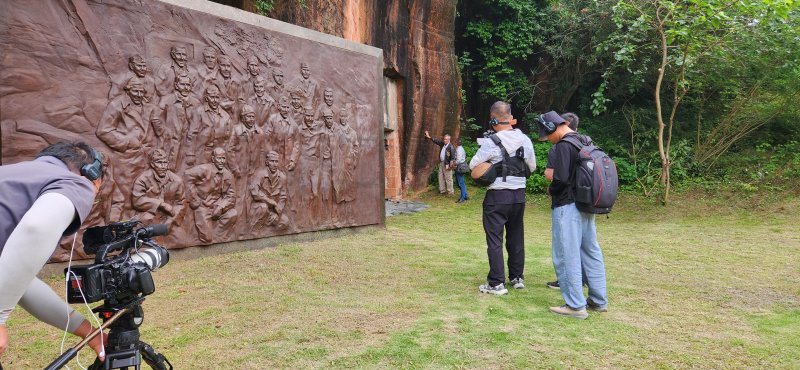
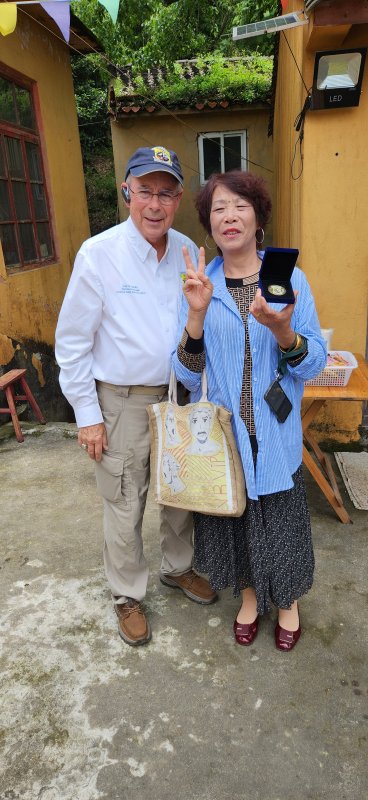
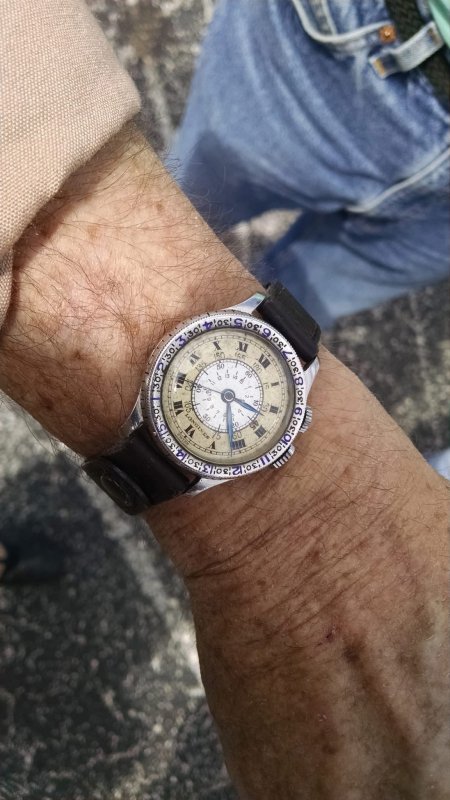
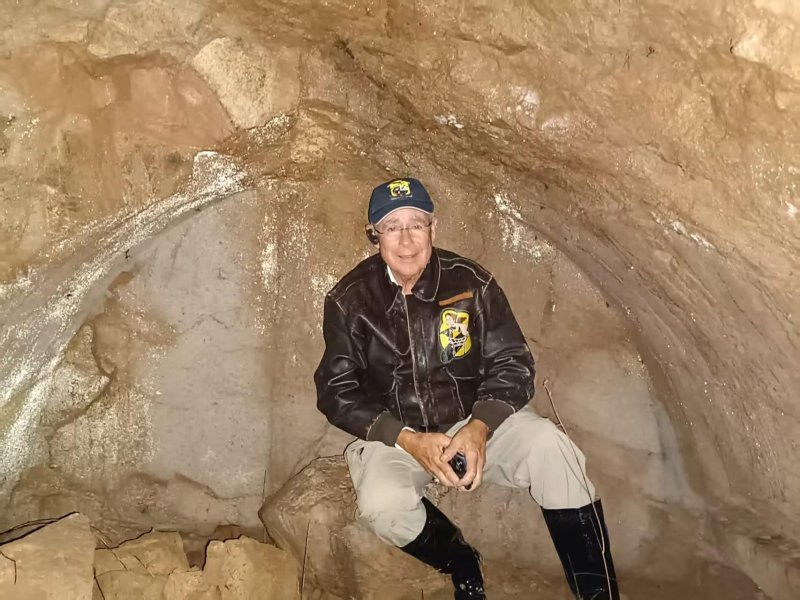

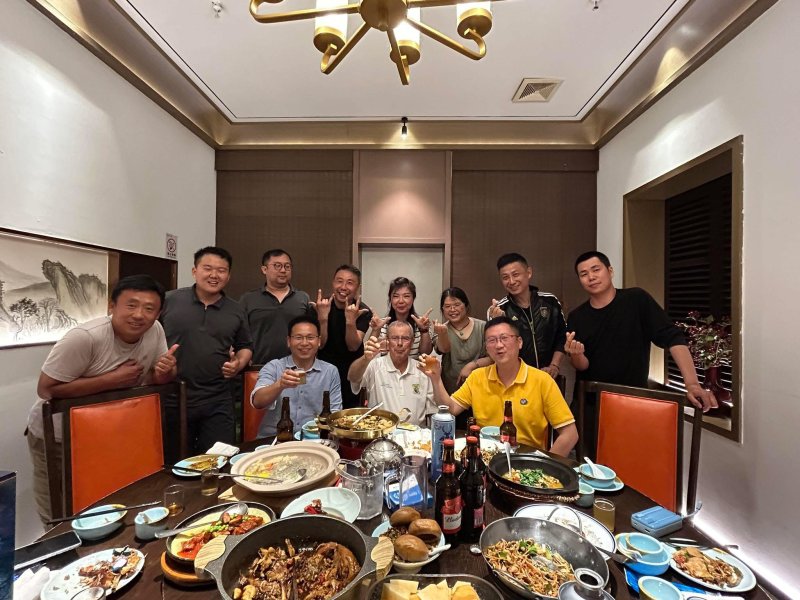
Bill Shull has been covering Lewes for the Cape Gazette since 2023. He comes to the world of print journalism after 40 years in TV news. Bill has worked in his hometown of Philadelphia, as well as Atlanta and Washington, D.C. He came to Lewes in 2014 to help launch WRDE-TV. Bill served as WRDE’s news director for more than eight years, working in Lewes and Milton. He is a 1986 graduate of Penn State University. Bill is an avid aviation and wildlife photographer, and a big Penn State football, Eagles, Phillies and PGA Tour golf fan. Bill, his wife Jill and their rescue cat, Lucky, live in Rehoboth Beach.











